Mouthguards
Playing sports is often about winning and losing. But losing should not include your teeth. Just as helmets, shoulder pads, and knee pads are worn to protect against sports-related injuries, mouthguards—also called mouth protectors—are an equally important piece of protective gear.
Why Wear Mouthguards
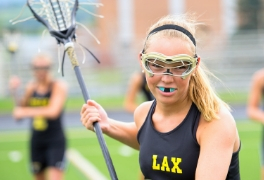
As the name suggests, mouthguards help prevent injury to the mouth area, especially to the teeth, lips, cheeks, and tongue. Even athletes who use helmets or face masks should wear mouthguards, since they also protect against head and neck injuries by cushioning blows. The Massachusetts Dental Society (MDS), the Massachusetts Medical Society (MMS), and the Massachusetts Chapter of the American Academy of Pediatrics (MCAAP) recommend that adults and children wear mouthguards during all sports in which injury to the mouth may occur.
Types of Mouthguards
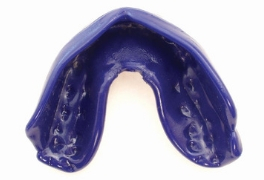
There are three different kinds of mouthguards. Each one is different in comfort, fit, and cost:
Custom-made Mouthguard
This type of mouthguard is by far the best mouthguard in terms of fit, comfort, and protection. It is made by a dental lab from a dentist’s impression of the teeth. By pressure-laminating the mouthguard during its fabrication, the final product is designed to fit the athlete’s mouth exactly.
Boil-and-Bite Mouthguard
The boil-and-bite mouthguard is a mouth-formed protector that is usually softened by immersing it in hot water. It is then shaped to the teeth by using finger, tongue, and biting pressure. This type of mouthguard may not fit as well as the custom-made version.
Stock Mouthguard
The stock or ready-made mouthguard is found at most sporting goods stores. It comes in several shapes and is constructed of rubber or polyvinyl material. However, because little can be done to adjust its fit, it may be uncomfortable and can interfere with breathing and speaking.
Be sure to consult your dentist to determine which mouthguard is best for you; however, because they offer the best protection and are considered the most comfortable to wear, the MDS recommends that athletes wear custom-made mouthguards when participating in contact sports.
Orthodontic Patients and Mouthguards
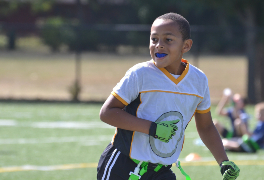
A properly fitted mouthguard is especially important for those athletes who wear braces or have fixed bridge work. A blow to the face could damage the brackets or other fixed orthodontic appliances. A mouthguard also provides a barrier between the braces and your cheeks or lips, limiting the risk of soft-tissue injuries. Although mouthguards typically cover only the upper teeth, your dentist or orthodontist may recommend that you wear a mouthguard on your bottom teeth if you have braces on your lower teeth. And, remember, do not wear a retainer or other removable appliances while participating in any contact sport.
Caring for Your Mouthguard
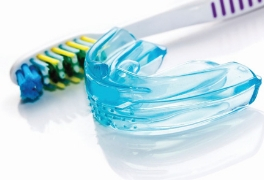
Check the condition of the mouthguard from time to time to see if it needs replacement. Tears and perforations can irritate the teeth and mouth tissues. These conditions also diminish the amount of protection the mouthguard can provide on the playing field.
As athletes grow, changes in tooth position and jaw size will also require changes in the mouthguard. Be sure to visit your dentist regularly to have the fit of your mouthguard checked.
Tips for Handling Mouthguards
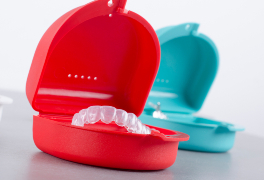
- Athletes should keep mouthguards in their mouths during practice and games.>
- Athletes should not remove their mouthguards while on the court, rink, or field.
- During short breaks and timeouts, athletes are advised to keep their mouthguards in their mouth.
- When athletes do remove their mouthguards during longer breaks, such as half-time periods, mouthguards should be stored in a container or plastic wrap.
- If hand contact with the mouthguard occurs, it is recommended that athletes rinse off the mouthguard with water (e.g., water bottles) and wash their hands.

